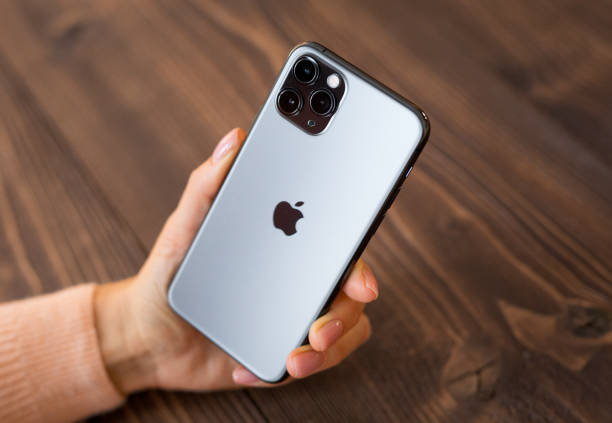20 Amazing Facts about iphone/ Apple Phone
Brief about iphone-
The iPhone is a line of smartphones designed and marketed by
Apple Inc., one of the world's leading technology companies. Here's a brief
overview of the iPhone's history and its impact on the smartphone industry:
The first iPhone was
introduced by Apple's co-founder and then-CEO, Steve Jobs, on January 9, 2007.
It was a ground breaking
device, combining a mobile phone, an iPod media player, and an internet
communication device into a single product.
The original iPhone featured
a 3.5-inch touchscreen display and ran on a simplified version of Apple's Mac
OS X operating system.
In 2008, Apple introduced
the App Store, which allowed developers to create and distribute third-party
applications for the iPhone.
Apple released the iPhone
3G in 2008, featuring 3G data speeds and built-in GPS.
The iPhone 4 introduced
the Retina Display, which offered incredibly high-resolution visuals.
In 2011, the iPhone 4S
debuted with Siri, Apple's voice-activated personal assistant.
The iPhone X marked a
significant design departure with an edge-to-edge OLED display and the removal
of the physical home button.
It also introduced Face
ID, Apple's facial recognition technology, which replaced Touch ID.
The iPhone has had a profound impact on the smartphone
industry and modern society, setting industry standards for design, user
experience, and technology integration. It continues to be one of the most
popular and influential consumer electronics products globally, with new models
released regularly, each featuring innovative advancements in technology and
functionality.
Here are 20 interesting facts about the iPhone:
1. **Launch Date**:
The first iPhone was announced by Steve Jobs on January 9, 2007, and
released later that year on June 29.
2. **Revolutionary Touchscreen**:
The original iPhone introduced a revolutionary touchscreen interface,
which set the standard for modern smartphones.
3. **iPhone OS to iOS**: The
iPhone's operating system was initially called iPhone OS. It was later renamed
iOS when the iPad was introduced.
4. **App Store**:
The App Store, launched in 2008, allowed third-party developers to
create and distribute apps for the iPhone, transforming how we use smartphones.
5. **Retina Display**:
Apple introduced the Retina display with the iPhone 4 in 2010, boasting
a pixel density so high that individual pixels are nearly indistinguishable to
the human eye.
6. **iPhone Sales**:
As of my last knowledge update in September 2021, Apple had sold over
2.5 billion iPhones.
7. **Siri**: Siri,
Apple's voice-activated personal assistant, made its debut on the iPhone 4S in
2011.
8. **Fingerprint Sensor**:
Apple introduced Touch ID, a fingerprint sensor, with the iPhone 5S in
2013, adding an extra layer of security.
9. **Face ID**: Face ID, facial
recognition technology, was introduced with the iPhone X in 2017. It replaced
Touch ID on flagship iPhones.
10. **iPhone SE**:
The iPhone SE, first released in 2016, was designed as a more
budget-friendly option while retaining many features of flagship models.
11. **Water Resistance**:
Starting with the iPhone 7 in 2016, iPhones have been increasingly
water-resistant, allowing them to withstand submersion to a certain depth.
12. **iPhone Naming**:
Apple's iPhone naming conventions have included numbers (e.g., iPhone
6), letters (e.g., iPhone X), and combinations (e.g., iPhone 11).
13. **A-Series Chips**:
Apple designs its own A-series chips, which power iPhones. These chips
are known for their performance and energy efficiency.
14. **Dual Cameras**:
Dual-camera systems were introduced with the iPhone 7 Plus in 2016,
improving photography capabilities.
15. **Animoji and Memoji**:
The iPhone X introduced Animoji, which uses facial recognition to
animate emoji characters. Memoji allows users to create personalized animated
avatars.
16. **MagSafe**: MagSafe, originally
used for MacBook charging, returned to iPhones with the iPhone 12. It enables
easy attachment of accessories like cases and chargers magnetically.
17. **iPhone Photography**:
The iPhone has played a significant role in popularizing mobile
photography, with millions of photos shared daily on social media.
18. **Privacy Focus**:
Apple emphasizes user privacy and introduced features like App Tracking
Transparency to give users more control over their data.
19. **iOS Updates**:
iPhones receive regular iOS updates, which include new features,
security enhancements, and bug fixes, extending the lifespan of older models.
20. **Environmental Initiatives**: Apple
is committed to environmental sustainability, and many iPhone components
are made from recycled materials.
The iPhone has had a profound impact on the smartphone
industry and how we interact with technology, continually pushing the
boundaries of innovation.


